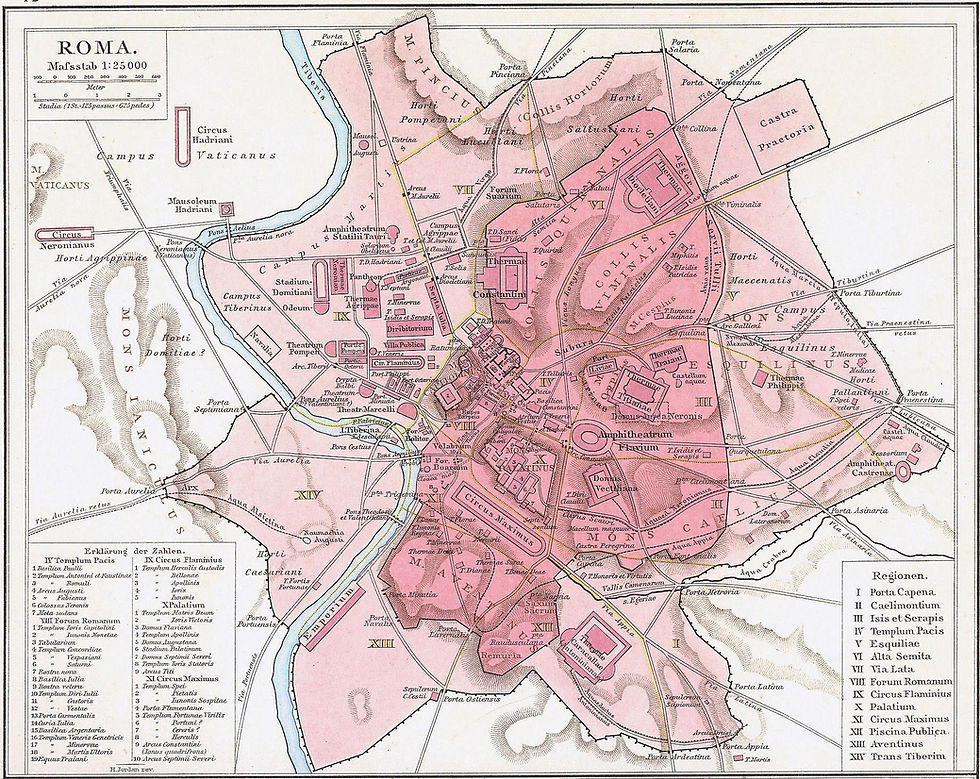😀👇𝐑𝐨𝐦𝐚𝐧 𝐀𝐪𝐮𝐞𝐝𝐮𝐜𝐭𝐬 𝐏𝐚𝐫𝐭 𝟏 𝐨𝐟 𝟐:
- Mooney Colm
- Jun 16, 2023
- 2 min read
Water is a vital ingredient to sustain life and for the first 400-500 years of Rome’s existence the Romans could quench their thirst and help fuel industry by availing of the local springs, wells and various rivers with the Tiber being one example. Though, as the population of Rome was to grow to colossal levels then the need for others larger options needed to be addressed. The problem of water supply was remedied with the impressively sized aqueducts which provided Rome, Pompeii and some parts of the provinces with a steady supply of water, to local elites like Pliny, whose private ‘adequately’ sized homestead needed the operation of his own personal water supply. While these mighty constructions provided a huge supply of fresh but not always pure water supply to cities, it also acted as a target for besieging opponents; (e.g.) under Justinian’s goal to reclaim Italy, his general Belisarius used the aqueducts of Naples to allow his men gain access to the town and quickly overcome its defenders. The Romans would continue with these amenities and they would last long after the Romans were removed from Rome.
Though the issue of the rural peoples proved to be the conundrum where they appeared less interested to provide water facilities. By and large it was down to local elites and groups of people to alleviate this issue, from the private small aqueducts to run-off rain collection systems, the rural communities needed to find the solution and they were largely successful. To give an idea of the rural distribution, Frontinus stated that of the total delivery of 14,018 quinariae; 71% went to the city while of the remaining 4,063 units over 50% of these went to private individuals.


























































Comments